
Travelling to Mexico in the month of December has always been challenging, even before the pandemic. There might be several factors involved, but mainly the fact that too many people want to travel there during the holiday season, either international tourists trying to get some sun on one of the many beautiful Mexican beaches, or expatriates in desperation to see family and friends. After moving to Canada and having children, I have only been back to Mexico once during the Christmas season. That one time was so hectic and stressful, especially travelling with a toddler, that my husband and I decided to avoid it, and from then on, have visited during the off-peak seasons (September and February are fantastic.)
Spending Christmas away from Mexico sometimes made me miss some of the things I used to do with my siblings as a youngster; we rapscallions stayed out of trouble by playing board games or working on a giant jigsaw puzzle, while eating seasonal snacks and sweets. My husband and I started recreating those activities here in Canada as my daughters were growing up; some of the snacks were pretty standard, such as popcorn or chocolate truffles, but others were not easy to find, such as turrones and figuras de mazapán.
Turrones are a traditional Spanish sweet consisting of almonds processed with honey and eggs, formed into bars and cooked in different ways to obtain either a brittle texture (Turrón de Alicante) or a soft bite (Turrón de Jijona). They are believed to have arrived to Spain from the Middle East, where they were some sort of almond halva. Other European countries have some sweets similar to hard turrón, for example, called nougat in France and torrone in Italy; there is a wonderful Italian deli near my house and I realized at some point that they carry torrone during the Christmas season, so now I am lucky enough to score some every Christmas:
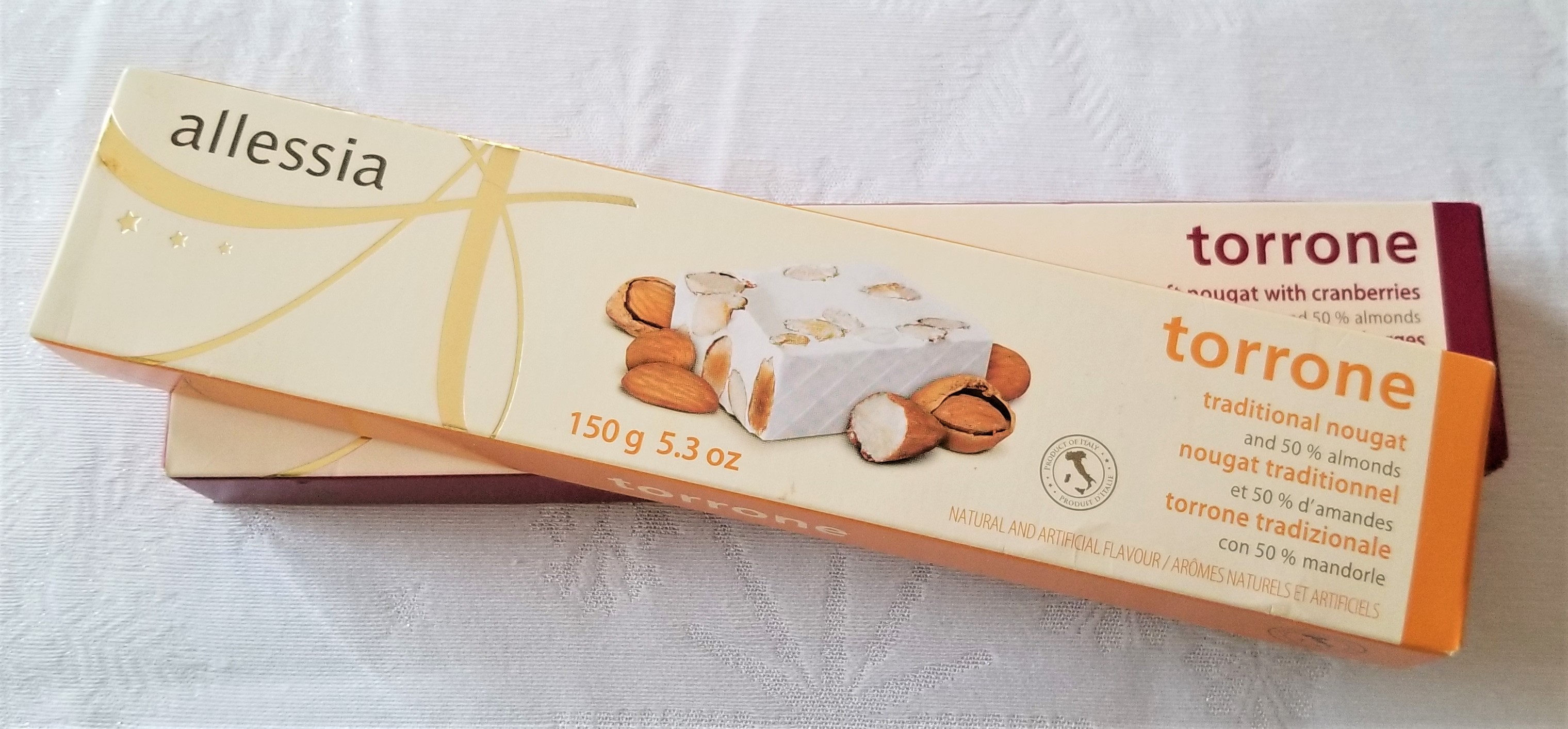
Mazapán is the Spanish word for marzipan, a paste made of ground almonds and powdered sugar, held together with the aid of a little water or egg. It is popular in all of Europe, as candy, and also everywhere for the confection of smooth cake coatings and ingenious decorations, in shapes such as fruit, animals or seasonal symbols. I am usually able to find bars at the supermarket, such as the one shown below:

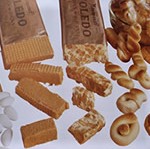 Now, the traditional Spanish marzipan comes originally from Toledo, and it is made in small portions, formed into interesting shapes, and baked to achieve a golden brown top. These shapes are the ones I remember from my childhood, which have been popular in Mexico for decades, thanks to Luis García Galiano, a Spanish immigrant, who opened his first Mazapanes Toledo™ store in downtown Mexico City in 1939. The business started small, and now has several branches around the city, offering many products in addition to their namesake marzipan shapes, such as turrones, candy coated almonds, and baked goods. In the photo shown here from their website, from left to right: candy coated almonds, soft Turrón de Jijona, brittle Turrón de Alicante, and Mazapán de Toledo shapes.
Now, the traditional Spanish marzipan comes originally from Toledo, and it is made in small portions, formed into interesting shapes, and baked to achieve a golden brown top. These shapes are the ones I remember from my childhood, which have been popular in Mexico for decades, thanks to Luis García Galiano, a Spanish immigrant, who opened his first Mazapanes Toledo™ store in downtown Mexico City in 1939. The business started small, and now has several branches around the city, offering many products in addition to their namesake marzipan shapes, such as turrones, candy coated almonds, and baked goods. In the photo shown here from their website, from left to right: candy coated almonds, soft Turrón de Jijona, brittle Turrón de Alicante, and Mazapán de Toledo shapes.
A rapid way to prepare Toledo style marzipan shapes at home would be to simply form some of the store-bought marzipan into shapes as shown above, and baking them, but I wanted to try making them from scratch, with the addition of egg-white to soften the paste, and a wash of egg-yolk for a shiny, golden brown finish.
Toledo Style Marzipan Shapes –
Figuras de Mazapán estilo Toledo
Printable recipe: Toledo Style Marzipan Shapes
Ingredients (for approximately 24 pieces)
1/3 lb (150 g) ground almonds
1/3 lb (150 g) powdered sugar
1 egg; white and yolk separated
Sift ground almonds and powdered sugar together (photo below, left); mix and sift a second time, then add egg-white (photo below, right):
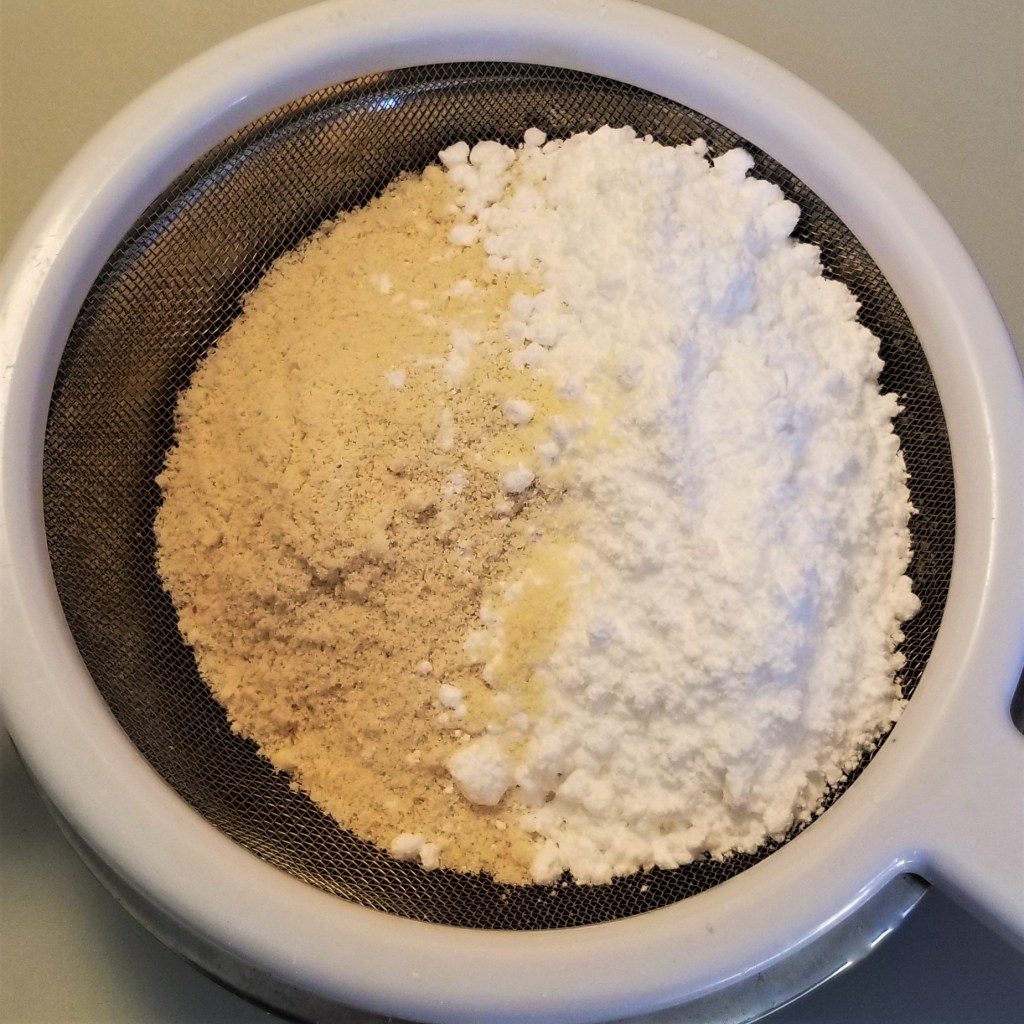

Gradually mix all together; it might seem too dry at first (photo below, left), but it should form a smooth and slightly sticky paste after incorporating all the powder and kneading the mix for a couple of minutes. Divide into small balls, approximately 2 teaspoons each (photo below, right):

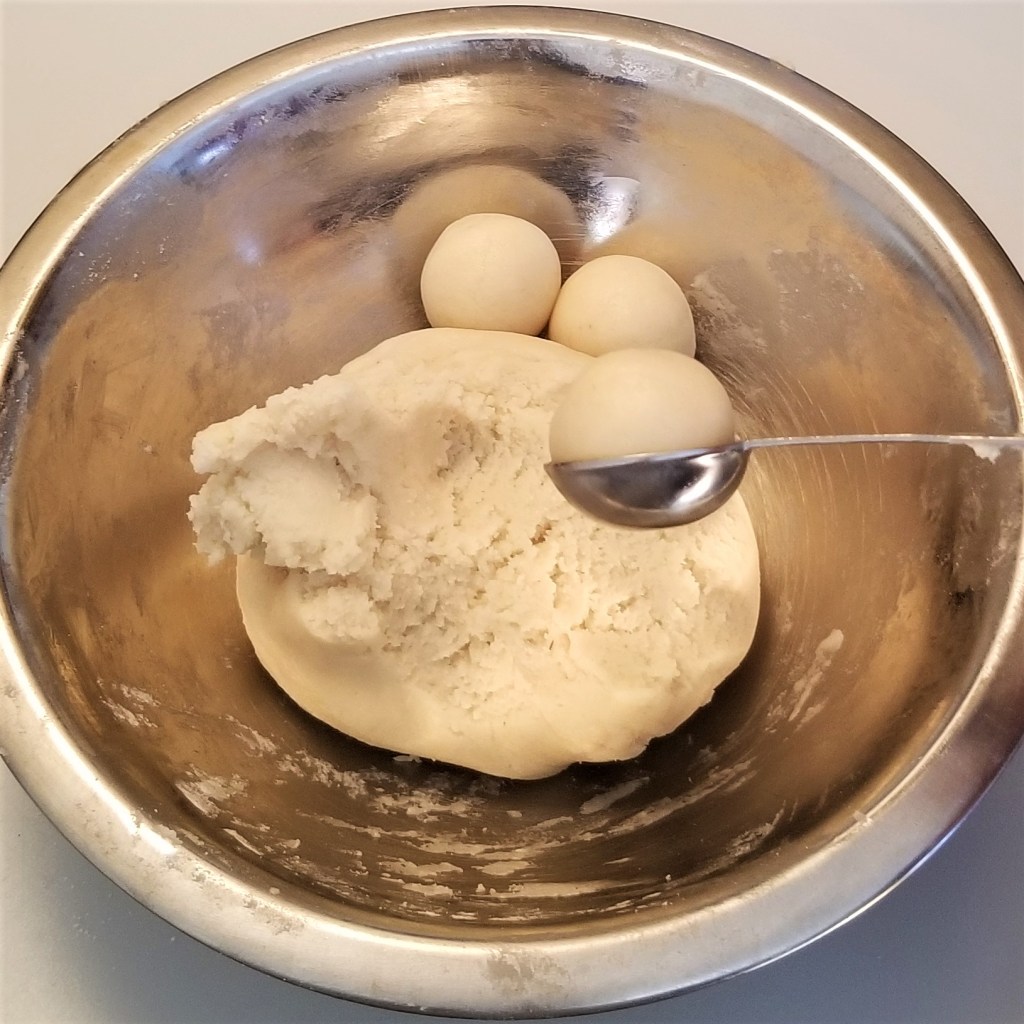
Work with one portion at a time to form different shapes; some of the most traditional are an oval flattened with a fork (photo below, left), or swirls, braids, wreaths and other shapes started with a portion rolled into a rope (photo below, right):


I got 24 pieces from my batch. Once all the shapes are formed, place them on a baking sheet lined with parchment paper, then brush the top with slightly beaten egg-yolk (photo below, left). Bake under the broiler for a few minutes, just until the tops turn golden brown (photo below, right):


Do not leave unattended, as they could easily burn; remove from the oven and allow to cool down to room temperature.
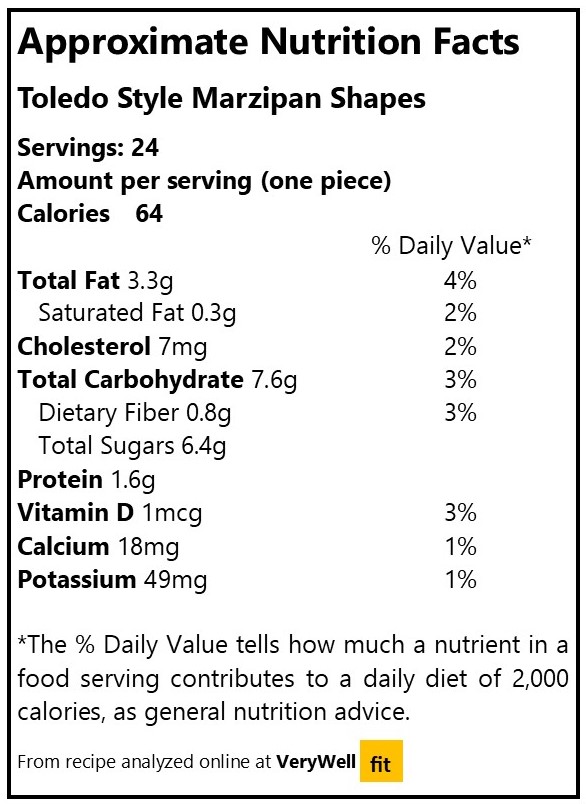
For comparison, I ended up making a couple of shapes with the store-bought marzipan paste, with no egg-white added, but brushed with egg-yolk wash. After baking, they looked more compact, and browned faster and to a darker shade, as seen in the right side of the photo below, left, compared to two pieces from the batch with egg-white on the left side of the photo. Both kinds had developed the characteristic crispy thin layer outside, and when sliced (as shown in the photo below, right), they revealed a soft inside, although the batch with egg-white (piece on the left side) was chewy, while the other looked much denser and felt more like a paste (piece on the right):
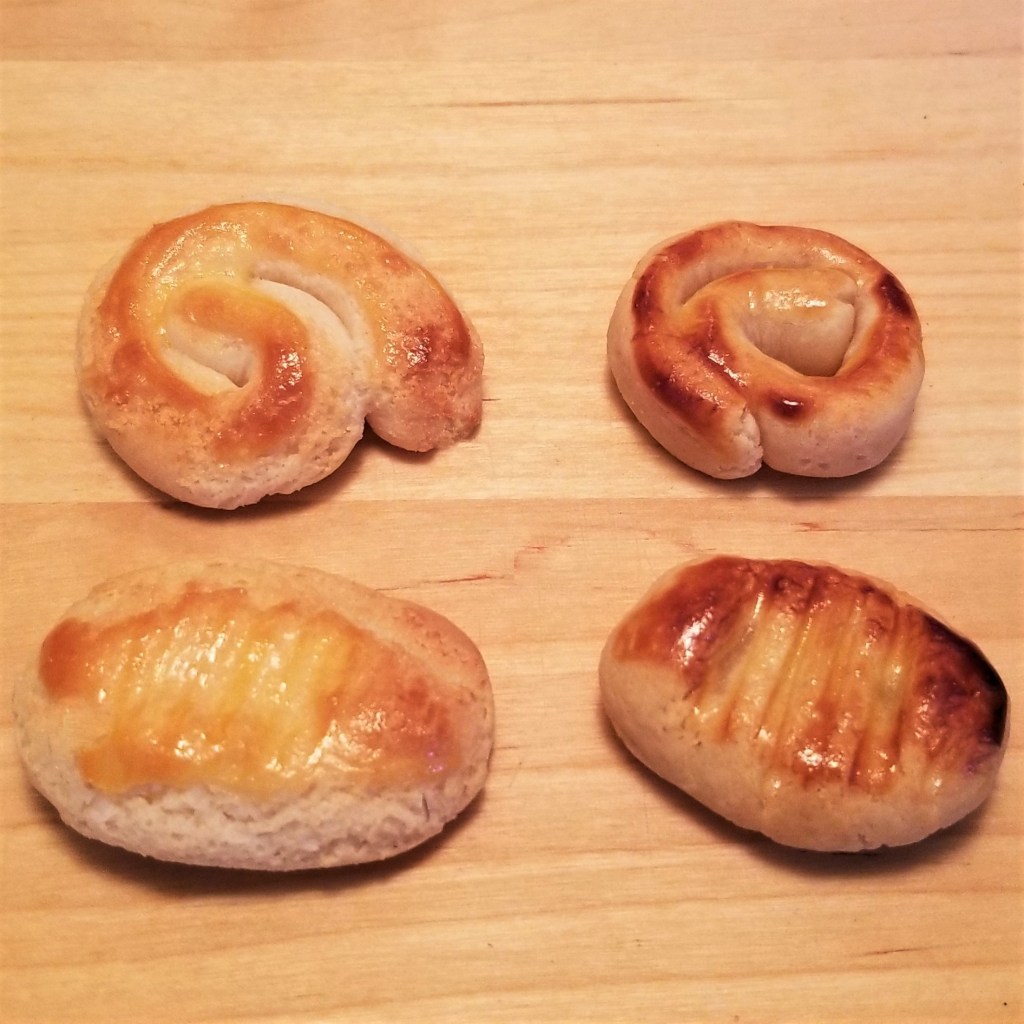
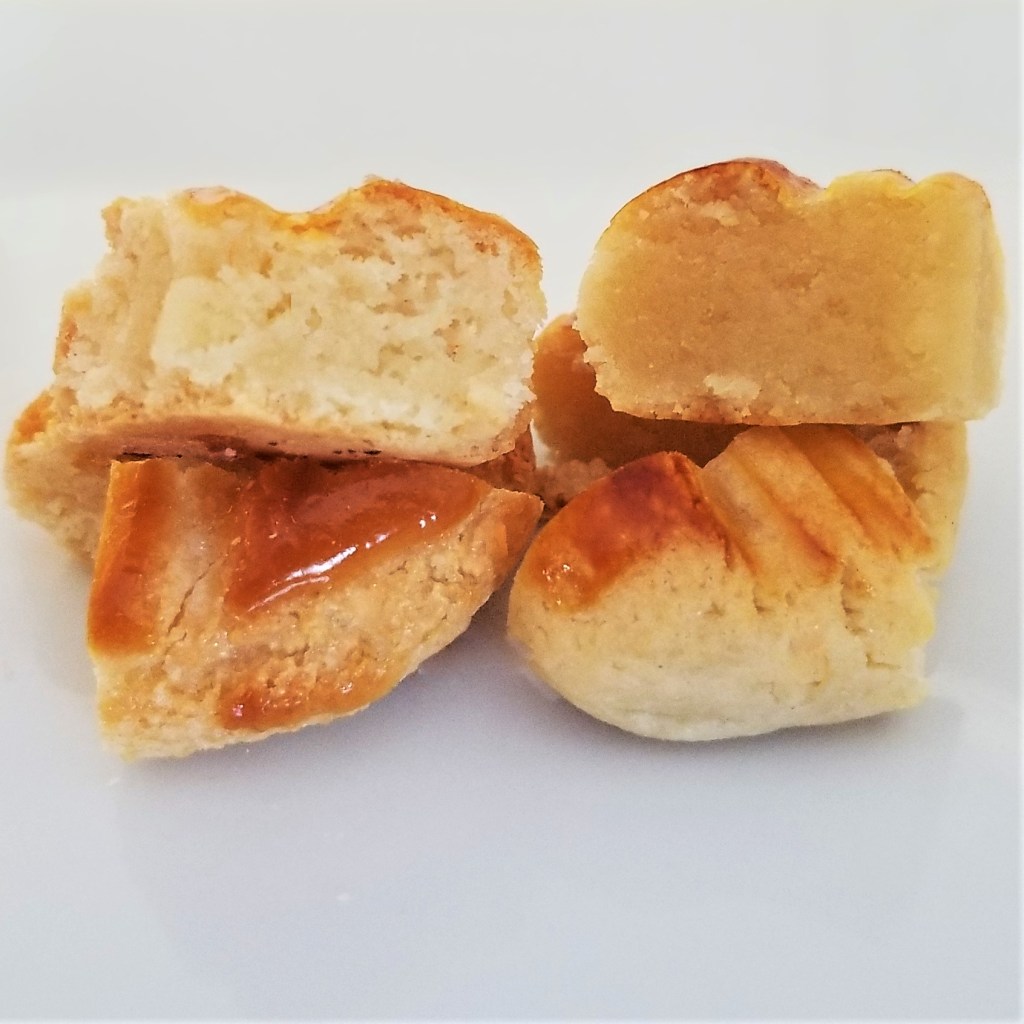
I think the Mexican Mazapanes Toledo™ shapes are somewhere in between these two, but as they were, the batch with egg-white was definitely closer. Maybe my egg was on the large side, or adding a little more ground almonds and icing sugar in equal parts would produce an even closer result to the original. However, they were still tasty and very pretty on a Christmassy tray:

To give as gifts, or if not being consumed right away, it might be better to individually wrap them in cellophane film fastened with adhesive tape, as shown below with some sliced turrón (torrone):

This is the classic spread I remember from my childhood in Mexico City, to share during the holiday season, while playing board games or working on a giant jigsaw puzzle.
In Mexico, there is a another type of mazapán, eaten year round, made from a mixture of ground peanuts and powdered sugar, and then compressed into cylinders, with no baking; they are very crumbly and have a completely different flavour from the Toledo style with almonds. The most popular brand is De la Rosa™ , shown below at the centre of the photo. In recent years, these started to be also sold covered with chocolate (on the left side of the photo) which I think are somewhat similar to the American Reese™’s peanut butter cups, shown on the right side of the photo:

For your convenience, click on the images below for products available on Amazon™. DISCLAIMER: Any reviews included in this post are my own, for items I have purchased, not provided by any company; as an Amazon Associates Program affiliate, I might receive a commission for any purchases originated from the links below, at no extra cost to you (thank you to readers who have bought other products starting with a click from my links!):
I am sharing my recipe at Thursday Favourite Things #468, with Bev @ Eclectic Red Barn, Pam @ An Artful Mom, Katherine @ Katherine’s Corner, Amber @ Follow the Yellow Brick Home, Theresa @ Shoestring Elegance and Linda @ Crafts a la Mode.
I am bringing my recipe to Full Plate Thursday #514 with Miz Helen @ Miz Helen’s Country Cottage.
I am joining Fiesta Friday #358, with Angie @ Fiesta Friday, co-hosting this week with Eff @ Food Daydreaming.
I am also joining Classy Flamingos Blog Party #131 with Linda @ On Poinsettia Drive.
I am sharing my recipe at What’s for Dinner? Sunday Link-Up #293 with Helen @ The Lazy Gastronome.
I am also sharing this recipe at Over the Moon #255, graciously hosted by Bev @ Eclectic Red Barn, and Marilyn @ Marilyn’s Treats.










What a delicious and yet different Christmas treat and gift. Definitely going to try this one.
LikeLike
Hope you like it, thank you, Mason!
LikeLiked by 1 person
Yes I think I will!
LikeLiked by 1 person
I’ve never eaten marzipan, and wasn’t entirely sure what it was, but expect I would like it.
LikeLike
One of my favourite Christmas treats for sure!
LikeLiked by 1 person
Mmmm, marzapan!
LikeLiked by 1 person
What a journey the turran has had. There are several varieties of sweets like that across India, using nuts of various kinds bound together with sugar. Often sesame is incorporated into it. Traveling further east, I’ve found the varieties with sesame very common in Korea and China, but they have also do have the ones with nuts. I think it may be hard to truly say where this came from.
LikeLiked by 1 person
Yes, the Mexican came from Spain; the Spanish from the Middle East, but if going back further, the trail gets blurry for sure.
LikeLiked by 2 people
********************************************************
Thank you for sharing at #OverTheMoon. Pinned and shared. Have a lovely week. I hope to see you at next week’s party too! Please stay safe and healthy. Come party with us at Over The Moon! Catapult your content Over The Moon! @marilyn_lesniak @EclecticRedBarn
********************************************************
LikeLiked by 2 people